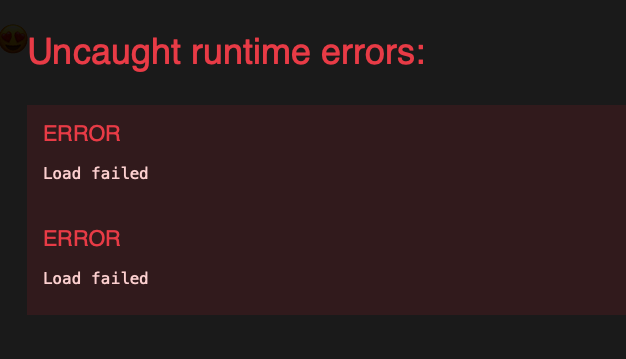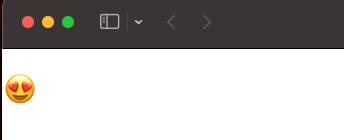React/ReactJS: A Simple ReactJS + Node.js/Express.js Application Example
In this tutorial, we do a simple ReactJS + Node.js application. A basic function component in React will make a GET request to the Node.js server and display the response.

We create a basic
Express.js server
to run at port 3001 (since port
3000 will be used by React). It sends out
an emoji ('😍') in object format for an HTTP request (at its port
3001). Save it as
server.js.
const express = require("express");
const app = express();
const port = 3001;
app.get("/", function(req, res) {
res.send({"emoji": "😍"});
});
app.listen(port, () => {
console.log(`server is running at port ${port}`);
});
Start the terminal and navigate to this node project directory. Start
the server by typing sudo npm start into
it. Access localhost at this port
http://localhost:3001/
and you will see the below page.

We next create a function component in React and make use of the
built-in
fetch()
method for making API request to the Node.js file
server.js.
import { useState, useEffect } from "react";
const App = () => {
const [emoji, setEmoji] = useState('');
useEffect(() => {
fetch("http://localhost:3001", { mode: 'cors'})
.then(res => res.json())
.then(data => setEmoji(data.emoji));
},[]);
return (
<h1>{emoji}</h1>
)
}
export default App;
If you start React (sudo npm start), you
might encounter the following error.

This is
CORS error, occuring due to the browser's adherence to same-origin policy. We
add an additional line to server.js (line
6) to allow the above CORS request.
const express = require("express");
const app = express();
const port = 3001;
app.get("/", function(req, res) {
res.set('Access-Control-Allow-Origin', 'http://localhost:3000');
res.send({"emoji": "😍"});
});
app.listen(port, () => {
console.log(`server is running at port ${port}`);
});
The React component will now be rendered fine.

For the above
CORS error, there is a Node.js package called
cors
to use with Express.js to enable CORS requests. Import
cors to
server.js (line 2) and use (line 5).
sudo npm install --save cors
const express = require("express");
const cors = require("cors");
const app = express();
const port = 3001;
app.use(cors());
app.get("/", function(req, res) {
res.send({"emoji": "😍"});
});
app.listen(port, () => {
console.log(`server is running at port ${port}`);
});